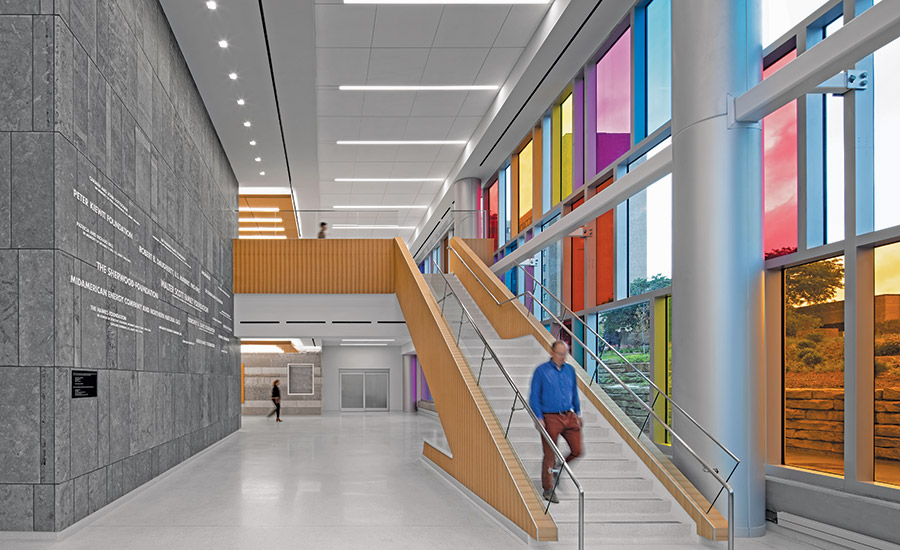Best Projects
Best Project Health Care Omaha VA Ambulatory Care Center

Photo courtesy McCarthy Building Cos.
Omaha VA Ambulatory Care Center
Omaha
BEST PROJECT
OWNER: VACDC / Heritage Services / Tetrad
LEAD DESIGN FIRM: Leo A Daly
CONSTRUCTION MANAGER: McCarthy Building Cos.
STRUCTURAL/CIVIL/MEP ENGINEER: Leo A Daly
Built as a public-private partnership—a first for the U.S. Dept. of Veterans Affairs—this three-level, 157,000-sq-ft outpatient care facility maximized the benefits of construction manager at-risk project delivery and concurrent designer-contractor collaboration. Early identification of discrepancies in subsurface utility maps for the 70-acre campus allowed seamless updates of design documents, avoiding potential schedule and cost impacts. Rather than splicing multiple steel sections for the superstructure columns as originally planned, the building team simplified the erection process by using single 63-ft-long continuous columns. With much of the steel erection work scheduled to take place through cold winter months, the team developed a bolted moment connection option that eliminated the need for welding yet preserved the building’s design and schedule.

Photo courtesy McCarthy Building Cos.
Toward the end of design, the project team implemented a design-assist contracting method to procure a curtain wall manufacturer for the north undulating “flag wall,” an architecturally complex feature inspired by the rippling of a flag in the wind. Contractor and designer jointly conducted the selection process to ensure bidders could achieve both precise architectural specifications and structural gridwork requirements. The curtain wall system features 12-in.-deep mullions with 1/8-in.-thick extrusions to meet federal blast load requirements and match with the underlying steel superstructure.

Photo courtesy McCarthy Building Cos.
These and other efforts kept the final $86-million project cost within 1% of the original conceptual budget estimate. Lean construction practices enabled the team to finish the project on schedule despite experiencing 43 days of weather delays during the second winter construction season.



